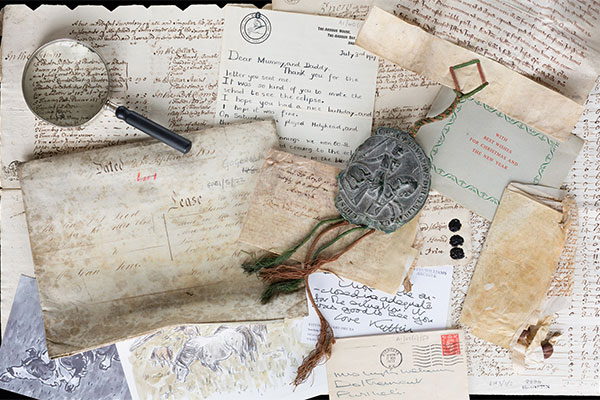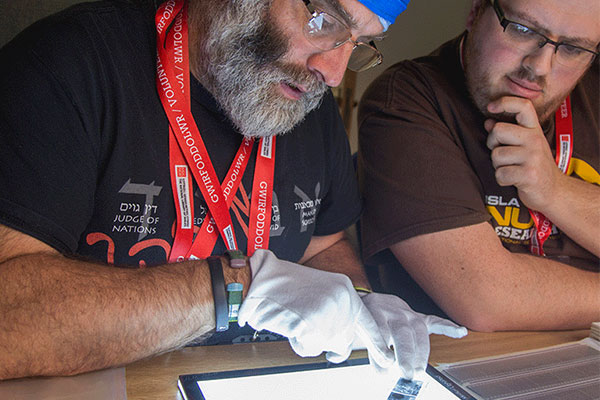Dafydd ap Gwilym and the poets
It was largely the work of Dafydd ap Gwilym (fl. 1320-70) that was responsible for the increased popularity of the cywydd from the middle of the fourteenth century onwards, and it is possible that Dafydd himself copied one of his poems in the Hendregadredd Manuscript (NLW MS 6680B). Other poets who recorded either their own compositions or the work of others were Gwilym Tew (fl. 1460-80) in Peniarth MS 51, Hywel Dafi (fl. 1450-80) in Peniarth MS 67, and Huw Cae Llwyd (fl. 1455-1505) in Peniarth MS 54. Some, such as Dafydd Epynt (fl. 1456-1515), found it difficult to handle the pen, as is evident from the quality of his handwriting in Peniarth MSS 54 and 55. On the other hand, Llywelyn Siôn (1540-?1615), who wrote Llanstephan MS 47, can be regarded as a professional scribe. However, many transcribers of Medieval Welsh poetry remain anonymous, and it is difficult to ascribe definite dates to these manuscripts, especially as many volumes often contain several hands, spanning many years.




